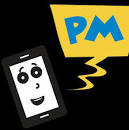Routine pediatric care, including wellness visits and vaccinations, plays a vital role in ensuring your child’s long-term health and development. However, in the wake of the COVID-19 pandemic and the disruptions it caused in healthcare access, many families have fallen behind on their children’s scheduled immunizations and well-child visits. Now is the perfect time to catch up and establish a regular care routine to protect your children—and others in your community—from preventable diseases.
Dr. Colleen Allorto, a trusted Bayhealth Pediatrician, emphasizes the importance of staying current on pediatric healthcare. “Vaccines prevent the spread of communicable diseases, and regular wellness check-ups help monitor physical, emotional, and cognitive development,” she explains.
Let’s explore why routine care is essential, how to get your child’s schedule back on track, and what steps parents can take today.

Why Routine Pediatric Care Matters
Benefits of Routine Wellness Visits
Regular wellness visits help track your child’s growth, identify developmental delays, and address any emerging health issues early on. During these appointments, doctors:
- Monitor height, weight, and BMI
- Evaluate vision, hearing, and motor skills
- Administer age-appropriate vaccines
- Provide advice on nutrition, safety, sleep, and behavior
- Screen for behavioral or mental health concerns
Preventative Healthcare at Its Best
Routine visits act as a preventative shield against common and serious childhood illnesses. By establishing a history with a pediatric provider, any concerns can be addressed before they become serious, and your doctor can offer more personalized, continuous care.
Why Childhood Vaccines Are Essential
Vaccines are one of the most effective ways to protect children and communities from infectious diseases like measles, whooping cough, and polio. According to the Centers for Disease Control and Prevention (CDC), childhood immunizations save millions of lives every year.
How Vaccines Benefit Children and Communities – Getting Kids Routine Care
- Prevent Severe Illness and Death: Immunizations protect children from potentially life-threatening diseases.
- Protect Vulnerable Populations: When a large portion of the community is vaccinated, herd immunity protects those who cannot be vaccinated.
- Reduce Time Off From School and Work: Healthy kids mean fewer sick days and less disruption to families’ daily lives.
Understanding the Childhood Vaccination Schedule – Getting Kids Routine Care
Typical Vaccination Timeline
After receiving initial vaccines at birth, most children follow a structured vaccination schedule that includes shots at:
- 2, 4, 6, 9, 12, 15, and 18 months
- 4–6 years
- 10–12 years
- Additional boosters during teenage years
The CDC provides detailed immunization schedules for children and adolescents, which are helpful to cross-check against your child’s medical records.
Age Groups Most Likely to Be Behind
Dr. Allorto points out that 2-year-olds and preteens aged 10 to 12 are most likely to be behind on routine vaccines, especially following the pandemic. Parents should pay close attention to these age groups when catching up.
Steps to Get Back on Track – Getting Kids Routine Care
1. Review the Recommended Immunization Schedule
The first step in getting back on track is awareness. Take time to review the CDC’s childhood immunization schedule and compare it to your child’s medical records.
2. Call Your Pediatrician
Once you’ve identified potential gaps, call your child’s healthcare provider. They can:
- Confirm which vaccines are overdue
- Schedule wellness visits or vaccination-only appointments
- Provide guidance on a catch-up immunization schedule if needed
3. Schedule a Wellness Visit
Even if your child doesn’t need vaccines at the moment, wellness visits are critical for developmental screenings and general health maintenance. Don’t skip them.
4. Plan Ahead for School Requirements
Many schools require up-to-date immunization records. Getting caught up now ensures your child won’t face delays in attending school or extracurricular activities due to missing vaccines.
Tips for Making Wellness Visits Easier
- Prepare your child by explaining what to expect.
- Bring toys, books, or a tablet to ease anxiety in the waiting room.
- Reward them after appointments with a small treat or fun activity.
- Stay calm and supportive—your reassurance helps your child feel safe.
Don’t Delay: Act Now to Keep Your Kids Healthy
Reconnecting with your child’s pediatrician and staying consistent with wellness visits ensures better long-term health outcomes. Catching up on vaccines protects not just your child, but your entire community.
As Dr. Allorto reminds parents, “Routine care and immunizations are not just about checking boxes—they’re about giving your child the healthiest foundation for life.”
Frequently Asked Questions:
Q1: What should I do if my child has missed several vaccines?
A: Contact your pediatrician. They can help create a personalized catch-up immunization schedule based on your child’s age and what vaccines are needed.
Q2: Are wellness visits still necessary if my child isn’t sick?
A: Absolutely. Wellness visits are essential for monitoring growth, development, and preventive care—even when your child appears healthy.
Q3: How can I access the CDC’s immunization schedule?
A: Visit cdc.gov/vaccines and look for their age-based immunization schedules for children and adolescents.
Q4: Can my child get multiple vaccines in one visit?
A: Yes, your pediatrician may recommend giving more than one vaccine during a visit to help catch up. It’s safe and effective.
Q5: What if my child is scared of shots?
A: Talk to your child about what to expect, stay calm, and provide comfort during the visit. Distraction tools like toys or videos can also help.




